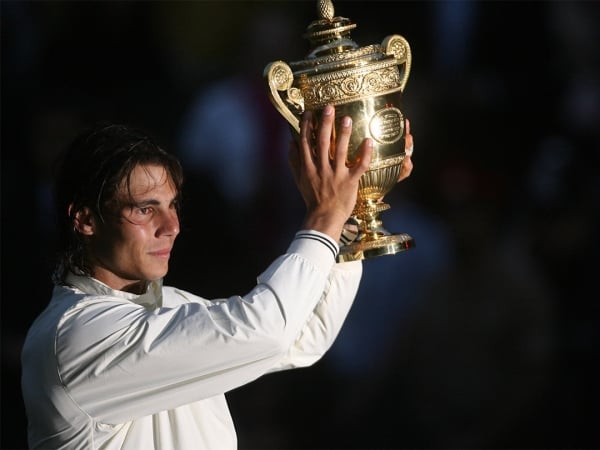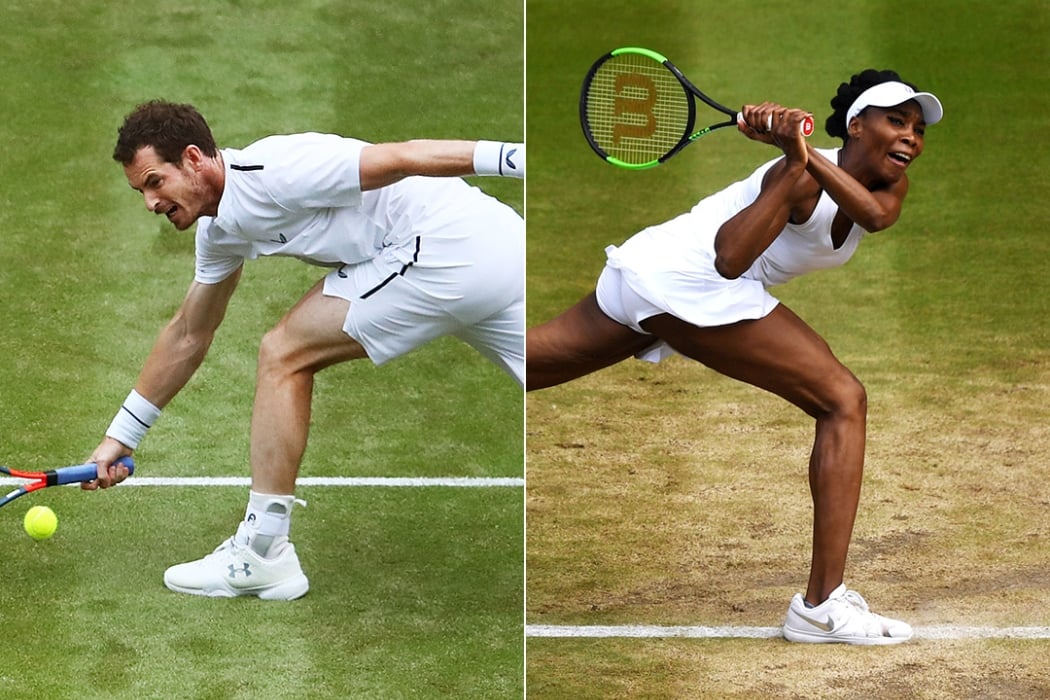Iga Swiatek has so far built a Roland Garros record close to what Rafael Nadal achieved at the same stage of his career.
At age 23, Swiatek is already a four-time champion in Paris, just as Nadal was at the same age.
Nadal was so dominant at Roland Garros that he won the tournament in all of his first four visits, from 2005 to 2008. Swiatek hasn’t been quite that unbeatable, but has nevertheless won in four of her first six campaigns, building a sparkling 35-2 record in Paris.
After winning his fourth Roland Garros title, Nadal traversed the English Channel and won his first Wimbledon title in his fifth appearance at the All England Club.
Next week, Swiatek too will embark on her fifth Wimbledon campaign. Can she emulate her idol once again, translating her clay-court dominance to success on the lawns?
"I can't see a good reason why she's not right there at the pointy end,” said Simon Rea, Tennis Australia’s senior manager of game analysis.
"It’s slightly more challenging for her to hurt opponents in the same fashion that she does with her forehand on other surfaces. But (2022 Wimbledon champion) Elena Rybakina has got one heck of a forehand, and Iga has been hitting the ball faster – and that's before we even consider spin – off her forehand at Wimbledon the last couple of years.
WIMBLEDON: Barty to return in legends’ event, partnering Dellacqua
"With more comfort on grass and the benefit of four Wimbledons under her belt now, and if that level of comfort and composure we saw from her at Roland Garros rolls onto Wimbledon, I think she finds a way for that forehand to be more of a weapon than we've ever seen before at SW19.”
Like Nadal, Swiatek instantly flourished on clay, winning Roland Garros in just her second full season on tour. She now boasts an incredible 94.6 per cent winning record at the tournament.
Similarly, she’s a less natural grass-courter, and approaching the game on this surface requires a shift in mindset, tactics and execution.
Nadal made this transition successfully. Just one year after winning his first Roland Garros title, he advanced to the Wimbledon final in 2006 and again in 2007.
But it was not until 2008 that he finally broke through at the game’s most prestigious grass-court event, after debuting at Wimbledon in 2003.
“Harking back to those early days of Rafa's career at SW19, I think he and his team recognised they needed more bang for their buck from a serve perspective,” Rea observed.

“They were prepared to challenge themselves and go, if not outside of their comfort zone, then to the limit of their comfort zone with aggression on the return.
“It couldn't be a point-starting mentality on grass in terms of the depth of his return position; it had to be that if he was going to yield ground, he had to be much more fierce with the first strike than he was on clay.
“This couldn't be a 'survival of the fittest' mentality; this has to be 'I'm taking the first opportunity to hurt you' mentality.”
Swiatek, who reached last year’s Wimbledon quarterfinals and the fourth round in 2021, has perhaps fewer elements in her game that require conscious adaptation or retooling to work on grass.
She already has a compact backhand, hugs the baseline and plays with the aggressive intent – regardless of surface – to take charge of points as quickly as possible.
She has been serving measurably bigger this season, increasing her average first-serve speed by 16km/h in the 12 months between Roland Garros 2023 and 2024. This could help her close the gap on the two most recent Wimbledon champions Marketa Vondrousova and Rybakina, who Rea noted have outperformed Swiatek on serve across the past two Wimbledons.
And although she has won 34 per cent of second-serve returns at Wimbledon in the past two years, Rea observed this winning rate has spiked to 42 per cent at WTA events in 2024.
"There are parallels between Nadal and Swiatek in their want to continually grow and improve from a technical perspective,” Rea said.
"Swiatek has also changed her serve technique; she's not standing still here, and this is why she’s such a great champion.
"If her second-serve points won percentage just creeps above 50 per cent this year, that could be really compelling. If her first-serve-unreturned percentage – the ability to generate cheap points on her serve – rises, say, from 26 to 35, I think that makes a world of difference for her. She may not have to get it to 50, like Rybakina.
"What does all of this translate to? It comes down to short points won. At Iga's last two Wimbledons she's won 53 per cent of those short points played, in the 0-4 shot range. Vondrousova won 58, Rybakina won 56.
“If Swiatek’s serve and return stuff improves even five per cent, I think she's right there. There's no good reason why she can't translate that to being a legitimate title contender on the grass.”



